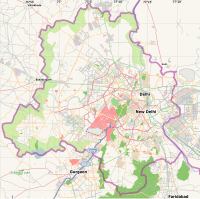
Photo from wikipedia
Abstract The reservoir architecture of a meandering river deposition can indicate the heterogeneity of the subsurface reservoirs and deposition and evolution of the paleo-river. Although outcrop study has been useful… Click to show full abstract
Abstract The reservoir architecture of a meandering river deposition can indicate the heterogeneity of the subsurface reservoirs and deposition and evolution of the paleo-river. Although outcrop study has been useful in characterizing reservoir architecture, the study of the subsurface reservoir is still a challenge due to its complicated reservoir geometry and forming process. In this work, a mature oil field in Bohai Bay Basin, eastern China was investigated to understand the reservoir architecture and evolution of a Neogene meandering belt using drilling cores, well logging, 3D seismic data, and oil production data. In the study area, five types of litho-facies were observed indicating the specific hydrodynamic conditions. The results obtained two types of point bar combination models focused on (1) the point bars migration in the same direction at equal elevation and (2) erosion and superimposition of the multi-phase point bars. Abandoned channels in study area are classified into two types: Type Ⅰ is the “Early and long-term abandoned channel” and Type Ⅱ is the “Late and short-term abandoned channel”. Well log facies of Type Ⅰ presents a low sandstone/mudstone ratio while that of Type Ⅱ has a high sandstone/mudstone ratio. Both models exhibited the weakening of the seismic reflection amplitude and changes in the waveform. Based on the well log curves, stratal slicing, and seismic facies analysis, single point bars are interpreted more accurately. The meandering river in the study area, which was previously interpreted as a large single point bar, was comprehended as a meandering belt formed by a multi-phase point bar complex with three single point bars in the meander. Erosion and overlapping can be observed between the first and second phases of the point bars. In modern river deposition, similar meander reservoir architecture and its evolution can be observed. Additionally, reservoir engineering analysis showed that there are flow barriers between point bars of different phases. The reservoir architecture of a meandering belt was characterized and the depositional evolution of the paleo-river was reconstructed. The methods proposed is significant for qualitative interpretations of reservoirs such as morphology channel recognition, reservoir connectivity analysis, and lithology and interlayer prediction.
Journal Title: Journal of Petroleum Science and Engineering
Year Published: 2020
Link to full text (if available)
Share on Social Media: Sign Up to like & get
recommendations!